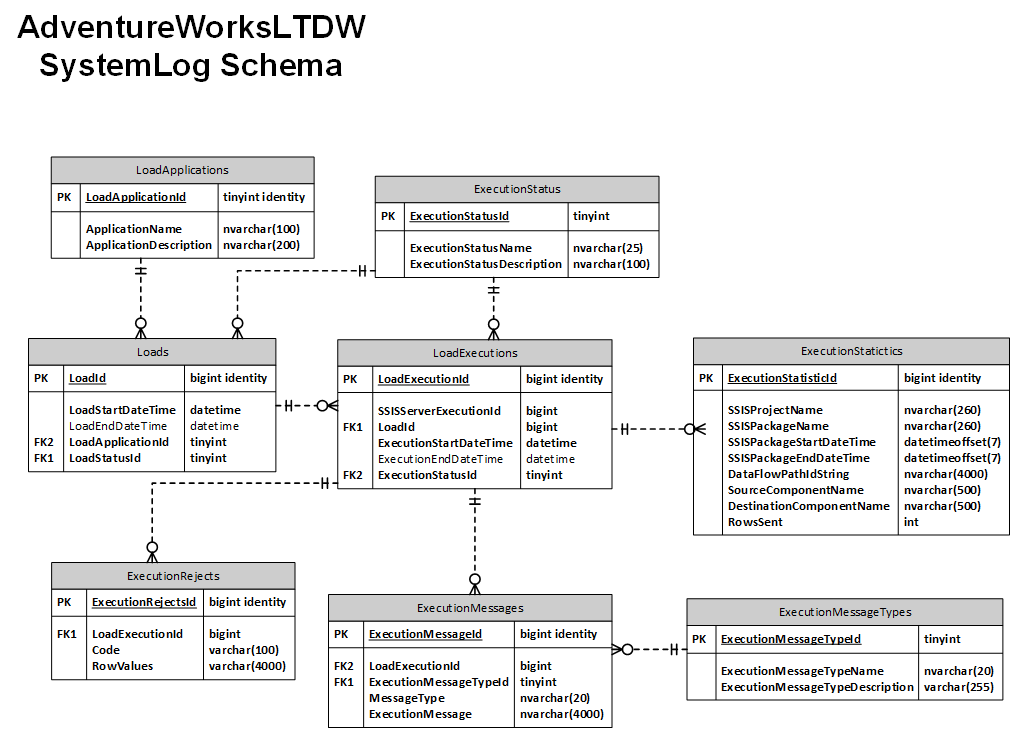This section of the book introduces an ETL framework. The purposes of such a framework are the following:
- Store execution statistics outside the SSIS catalog: although the Microsoft SSIS team always enhances catalog performance, keeping all execution data in the catalog will degrade catalog performance.
- Align the data in such a way to be able to do some analytics on the execution data. In that case, think of the framework as an SSIS package execution data warehouse.
The following diagram is the ER diagram of the framework tables. These tables are stored in the SystemLog schema:

Here's the table list and their purposes:
LoadApplications: This table contains one value:SSISCookBooksample solution. The purpose of this table, coupled with theLoadstable that we'll describe next, is to group many SSIS executions together into a common solution. For example, in this book, we'll have an entry-point package that will call the execution of the entry-point packages...



